Nothing Knew
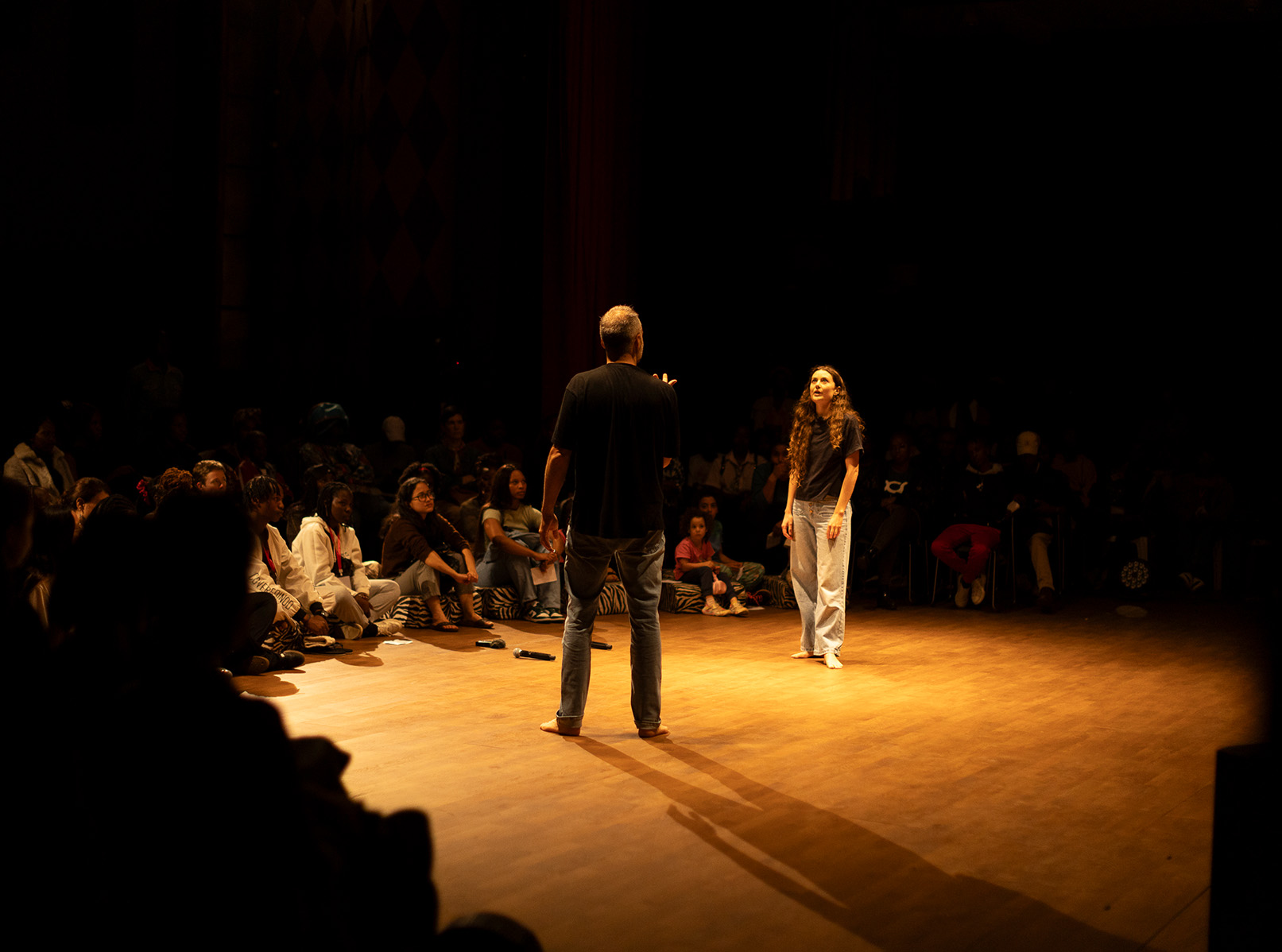
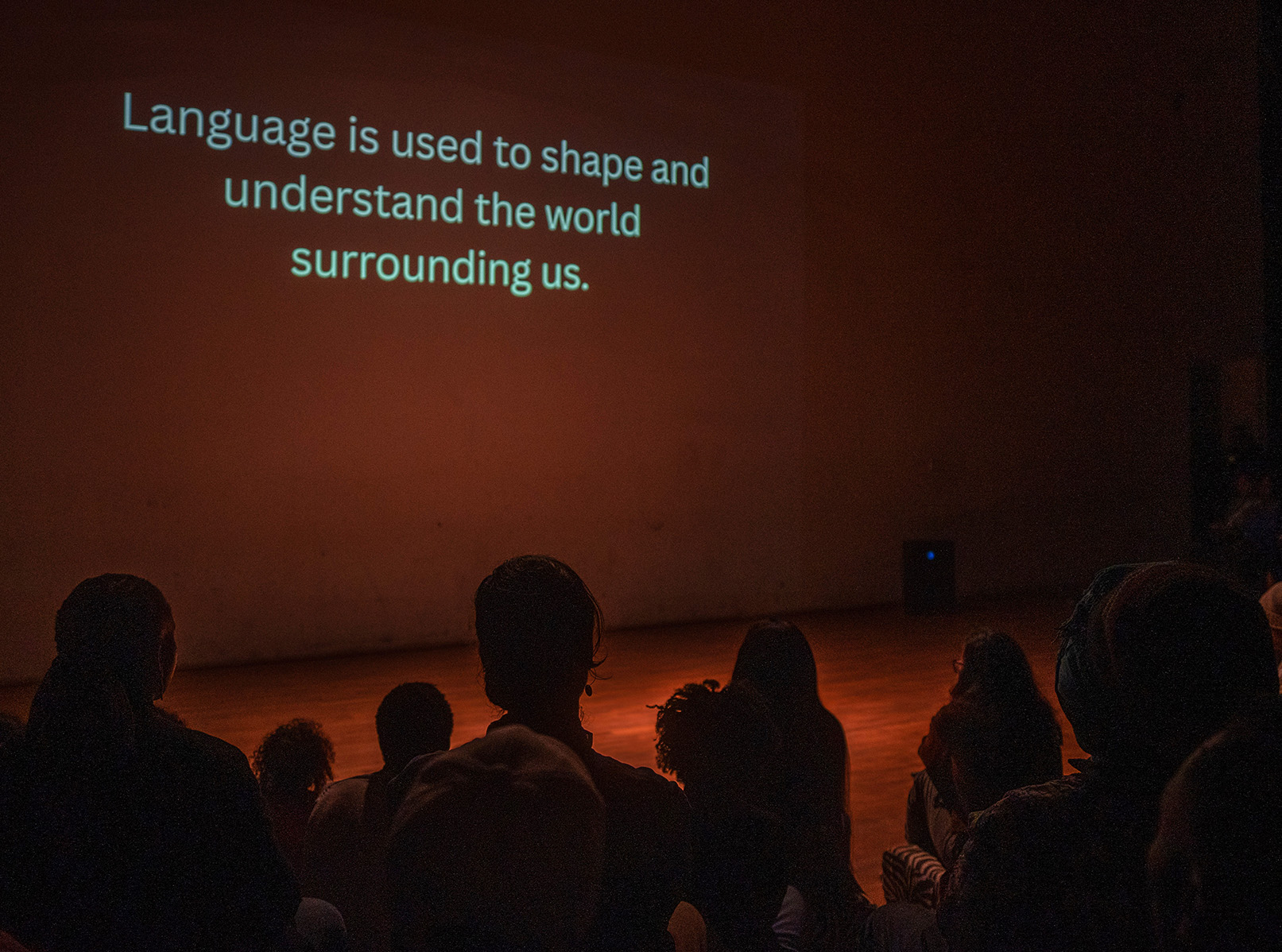
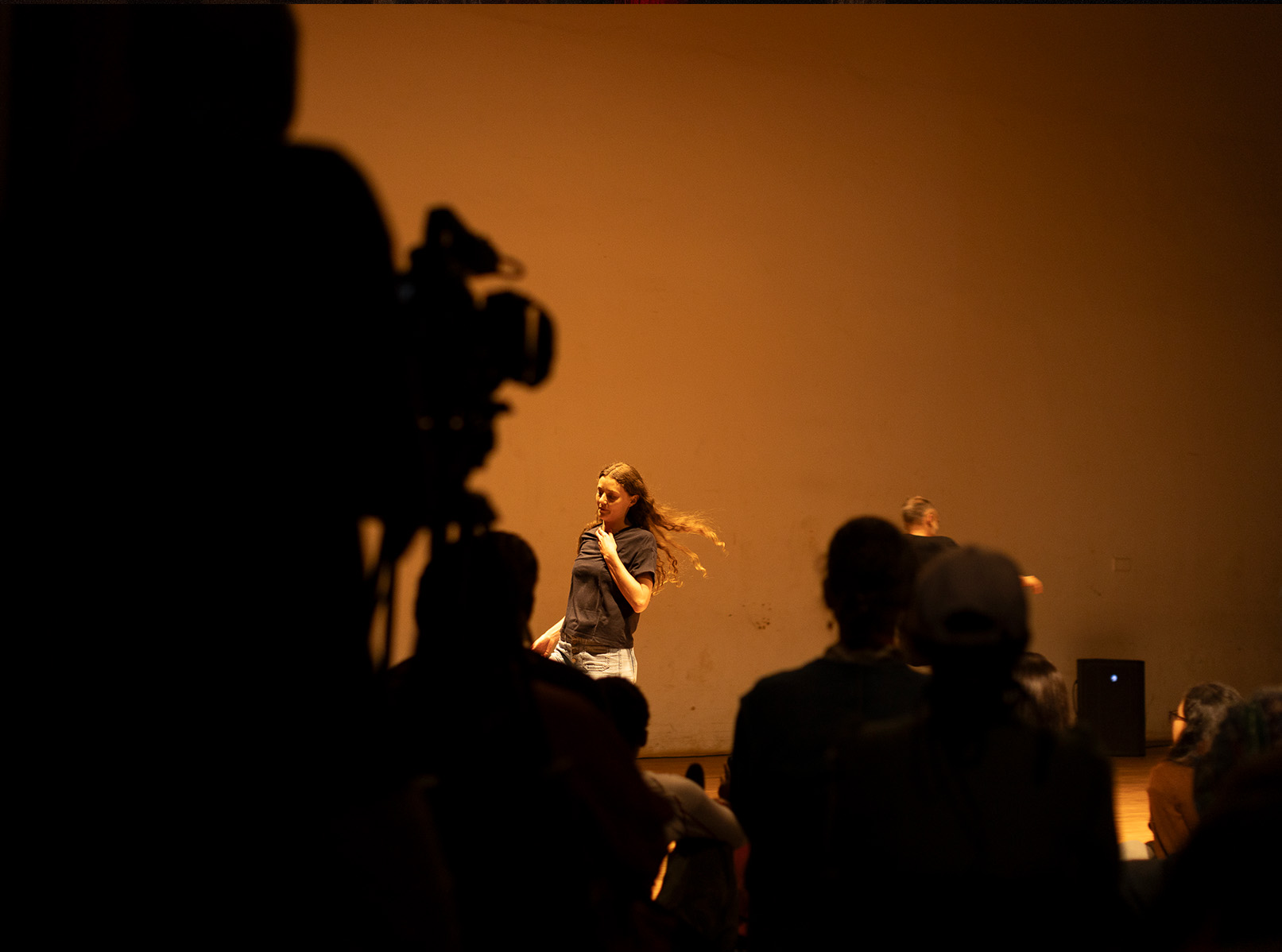
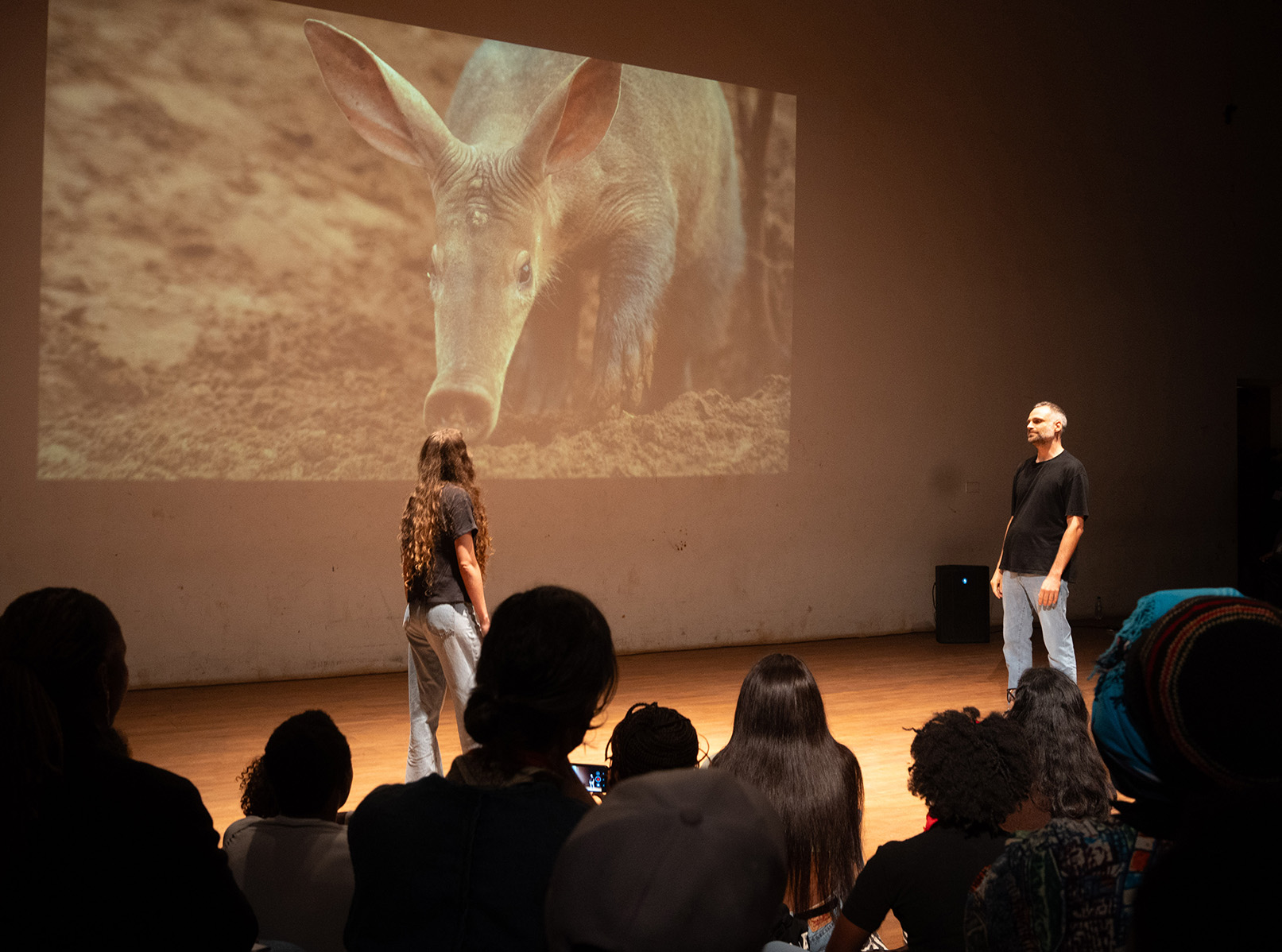
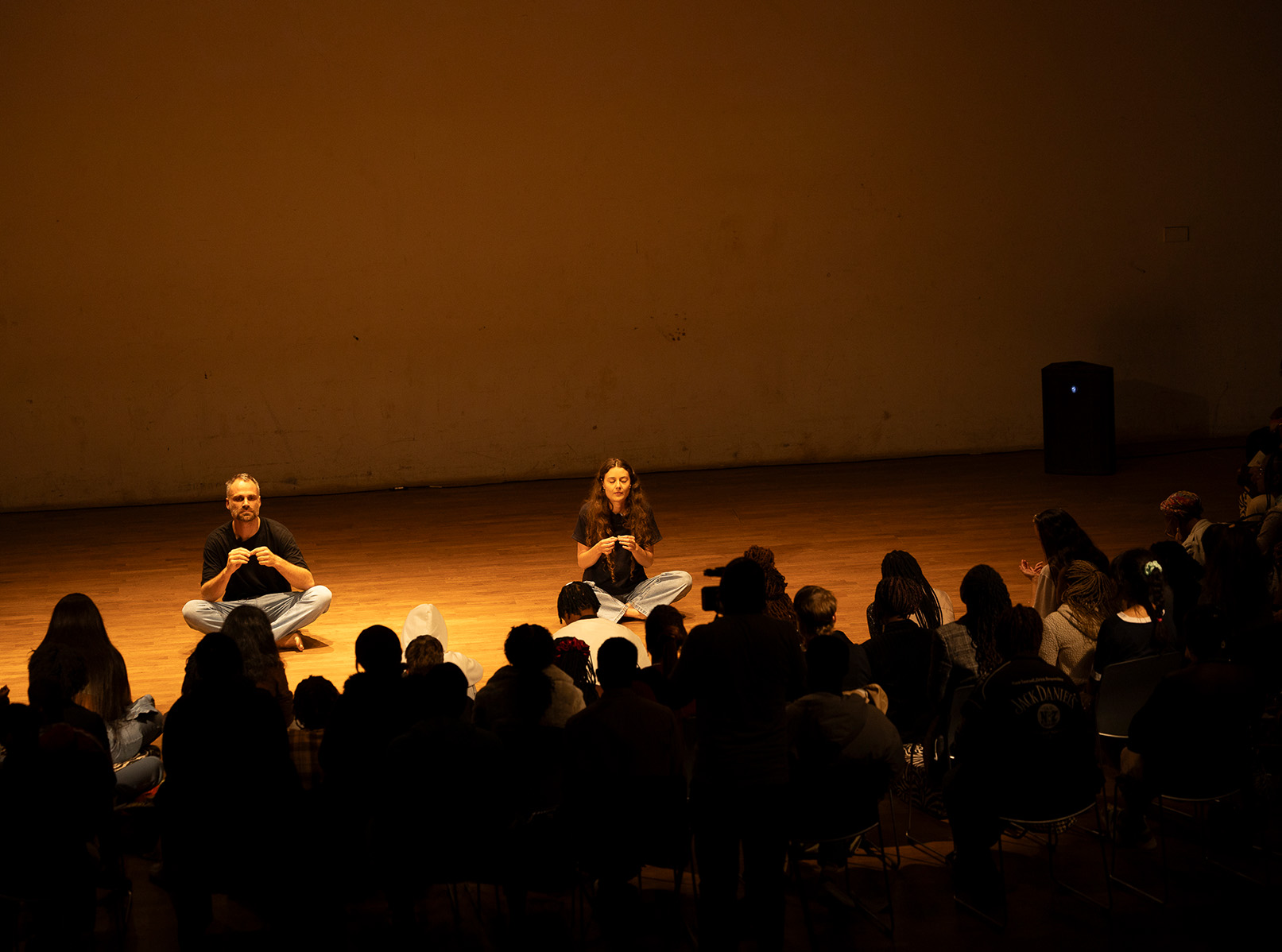
«If we could start again, from nothing, choosing each word carefully,
which ones would we choose?”
From Nothing Knew
which ones would we choose?”
From Nothing Knew
Performance - work in progress
2025 ︎
Concept
Noemi Ferrari & Alan Alpenfelt
Nothing Knew is a piece which aims to connect the blind and the sighted audience in experiencing and creating a world together.
We have the capacity to create reality, and also destroy it. We do it through language and communication. By constructing categories, symbols, myths, rules, we are able to share the sense of things and create a world made to suit our needs, or to exclude others from it.
What kind of reality is the true reality? Who decides it? Or is it just about which one is the more convenient? How quick can reality crumble? How many voices does it take to create a reality?
We want to try and create a reality starting from nothing. Beginning from an empty space, together with the audience, we aim to use the power of language and audio description as ontological core-instruments for the creation of a new world.
Will different points of view create power dynamics? Will we agree on a common world?
The act of describing becomes an act of power, of creation, an attempt of challenging the hierarchy of senses and questioning the politics of presence.
In collaboration with
Ticino in Danza
Nairobi Dance Life Festival - Kenya
Kenyan Soceity for the Blind
Daniel “Mbutch”
︎
Production scheduled for 2026
︎
Work in progress
3 July 2025
Dance Life Festival
Nairobi - Kenya
23 July 2025
Maabara, Malindi - Kenya
1 August 2025
National Library
In collaboration with the Kenyan Society for the Blind
Nairobi - Kenya
Tempesta Estiva
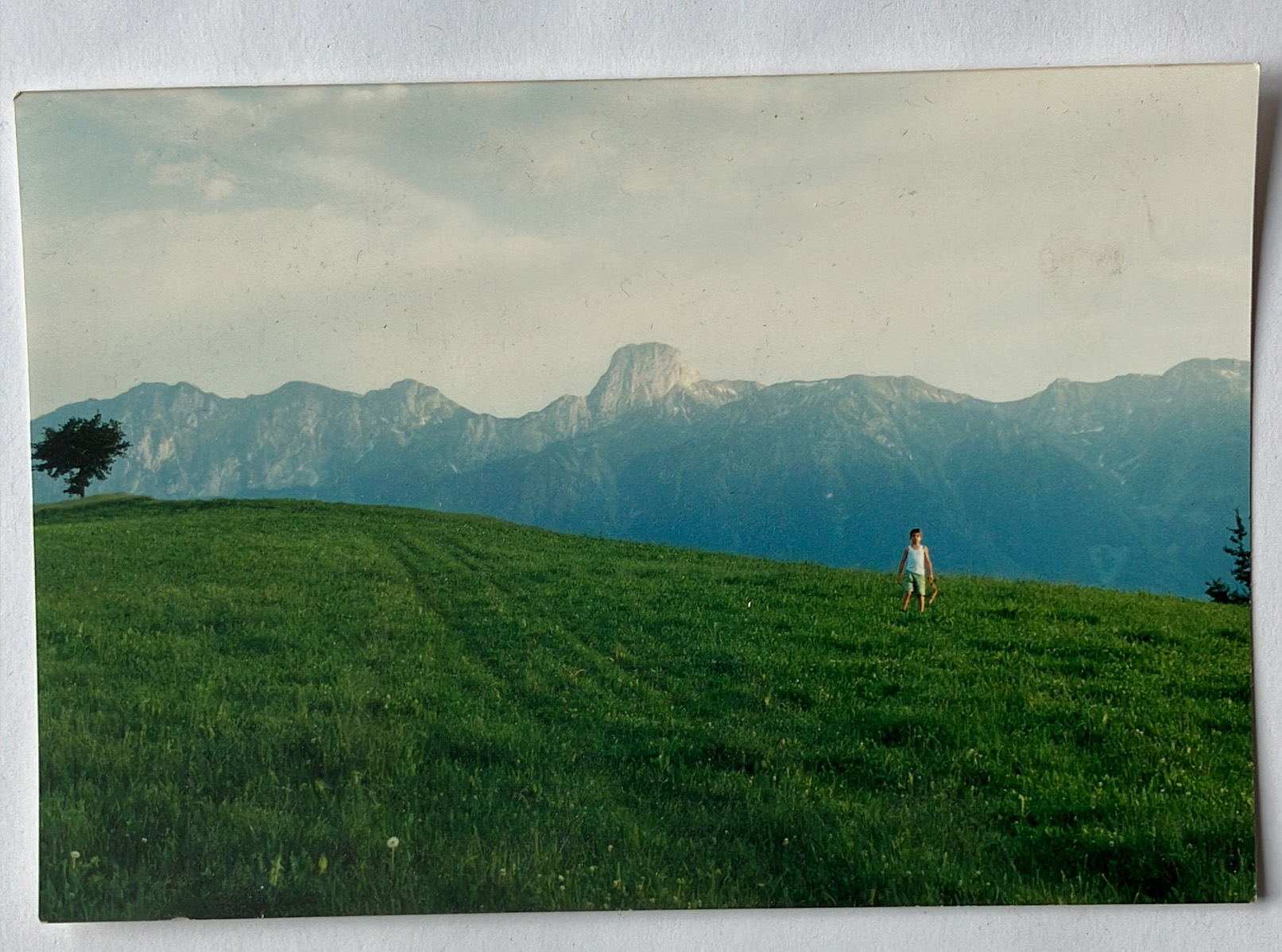
«If my dad had wanted me so much, why not her?”
Radio
2025
Italian
Credits
Written and directed by Alan Alpenfelt Voices:
Alan Alpenfelt, Gaia Passaretta
One evening in Brusino, a smal Swiss village on the lake of Lugano, at the age of 18 during a summer storm, I was shown a photo of a young girl in a family I didn't know, and I was told that she could be my sister and that if she really existed, she would be living in the United States.
I never thought to investigate further until I was given the opportunity to use the Studio 4 of the Swiss Italian Radio for the last time before it closed, where characters and stories had been created for over 50 years. And so I said to myself: what if I created my sister?
In this work, I explore the responsibilities towards sons and daughters, my relationship with the sense of family and that with loneliness.
Part of an ongoing research about the sense of the need of family.
Produced by
RSI - Rete due | Francesca Giorzi
On air in October 2025
Compostable
«[…] prima che […] l’estate si consumi tutte le spoglie, ormai putrefatte, tornano nel terreno per renderlo grasso, nero e fertile. Non passerà molto che […] ciò che è marcito e si è disfatto riprenderà vita in forme nuove, belle e colorate.» Hermann Hesse In giardino, 1908
«[…] kaum ist wieder […] ein Gartensommer verblüht, so sind alle die Leichen schon verwest und kommen wieder in den Boden, den sie fett und schwarz und fruchtbar machen müssen, und es geht wieder nicht lange, […] so kehrt das Faule und Aufgelöste mit Macht in neuen, schönen, farbigen Gestalten wieder.» Hermann Hesse, Im Garten, 1908
«[…] kaum ist wieder […] ein Gartensommer verblüht, so sind alle die Leichen schon verwest und kommen wieder in den Boden, den sie fett und schwarz und fruchtbar machen müssen, und es geht wieder nicht lange, […] so kehrt das Faule und Aufgelöste mit Macht in neuen, schönen, farbigen Gestalten wieder.» Hermann Hesse, Im Garten, 1908
Installation
Site-specific
Concept
Alan Alpenfelt
Design coordination
Camilla De Camilli
Idea e design
Marta Dell'Erba
Michael Guggenheim
Elisabetta Maifredi
Andrea Vailati
Biological and structural advice
Guido Maspoli
Compostable is an installation for the exhibition Nei Giardini di Hesse at the Hermann Hesse Museum in Montagnola, from March 29, 2025 to February 1, 2026.
Together with a handful of architecture students from the Academy of Architecture in Mendrisio, we imagined an installation that could involve the citizens of Montagnola and beyond, to become gardeners, poets, and bring their vegetable scraps to be transformed into precious humus. The rich soil generated over the months will be used to enrich Hermann Hesse's garden and plants.
Lo scarto entra in copostiera senza alcuna malinconia della propria identità, accettando di divenire altro, trasformandosi individualmente e trasformando l’intero composto; eterogeneo assemblaggio multilivello tra molecole, corpi uni, e pluricellulari che cooperano, negoziano, si invadono e parassitano, cambiando in continuazione l loro composizione e ciò che li circonda, al punto da rendere impossibile la differenziazione degli elementi.
- Antonia Anna Ferrante
Waste enters the composter without any melancholy about its own identity, accepting to become something else, transforming itself individually and transforming the entire mixture; a heterogeneous, multi-level assemblage of molecules, single-celled and multicellular bodies that cooperate, negotiate, invade and parasitize each other, continuously changing their composition and their surroundings, to the point of making it impossible to differentiate the elements.
- Antonia Anna Ferrante
- Antonia Anna Ferrante
Waste enters the composter without any melancholy about its own identity, accepting to become something else, transforming itself individually and transforming the entire mixture; a heterogeneous, multi-level assemblage of molecules, single-celled and multicellular bodies that cooperate, negotiate, invade and parasitize each other, continuously changing their composition and their surroundings, to the point of making it impossible to differentiate the elements.
- Antonia Anna Ferrante
Compost is rebellious and wild, it cherishes slow yet deep ongoing life transformation, it is colourful, it loves infinite possibilities, ends always mean new beginnings.
Often, the word “compost” makes humans think
oh no! It stinks!
oh no! all those flies!
oh no! It attracts mice!
oh no! It’s ugly!
However, the way compost behaves, is very much up to the care and actions of the humans themselves.
(Spoiler: compost actually doesn’t stink, it smells of moist wood. Mice don’t like it, unless they find meat or pasta leftovers. And what’s more, it shrinks 70% of its initial volume and becomes a dark, nutritious, healthy earth.
What one defines as waste, another defines as a source of new possibilities.)
The great Swiss poet Hermann Hesse knew this and loved compost. It was a way to take care of his garden. In fact, often poets are gardeners.
Or gardeners are poets.
We wanted to pay homage to Herman Hesse by building a new type of compost bin, which would be an inspiration to the local population and be located in front of the Hermann Hesse Museum in Montagnola. Some of the questions we asked ourselves were:
-
How can a structure contain, protect, sustain and valorise the conditions of an efficient transformation of a living and well-being society?
- How can a structure be the skin of a system which lives as a dynamic balance between the parts, based on relations, exchanges and ratio of its regenerative cycle?
-
How can we create an architectural structure which can communicate and express the intrinsic beauty and positivity of what is happening inside?
-
Can it itself be generated by a circular process of material reuse?
-
Should this object be explicit or mysterious? Serve other functions, allow grafts, contaminations, appropriations?
-
Could it be easily replicated by the population in the future?
-
How can we help transform a heap of veggies into a political, philosophical, and poetical body to be inspired by?
Let’s make bacteria, fungi, worms and humans feel at home together!
If you want to know more on how to create a healthy compost, follow these two links:
EN: How to compost - a beginner’s guide
IT: Come compostare - città di Mendrisio (CH)
In collaboration with
Museo Hermann Hesse
QUICK GUIDE TO COMPOSTING!

You need 2/3 of brown material (leaves, saw dust, twigs, bark, clean cardboard..) and 1/3 of veggies.
The brown material makes sure the compost gets activated and it limits smell and flies! So keep adding!
What to add:
1/3 of:
raw fruit and vegetable scraps, stale or moldy bread, crushed eggshells, coffee grounds, tree leaves
2/3 of:
leaves, saw dust, twigs, bark, clean cardboard
What not to add:
meat and fish, plasticized cardboard, magazines, color prints, glossy paper, cigarette butts and coal ash, carnivore manure, rope, glass, plastic, metal, textiles, leather
Before adding vegetable scraps to the compost, cut them into small pieces as this helps to speed up the process and transform the compost into valuable soil!
You need 2/3 of brown material (leaves, saw dust, twigs, bark, clean cardboard..) and 1/3 of veggies.
The brown material makes sure the compost gets activated and it limits smell and flies! So keep adding!
What to add:
1/3 of:
raw fruit and vegetable scraps, stale or moldy bread, crushed eggshells, coffee grounds, tree leaves
2/3 of:
leaves, saw dust, twigs, bark, clean cardboard
What not to add:
meat and fish, plasticized cardboard, magazines, color prints, glossy paper, cigarette butts and coal ash, carnivore manure, rope, glass, plastic, metal, textiles, leather
Before adding vegetable scraps to the compost, cut them into small pieces as this helps to speed up the process and transform the compost into valuable soil!
Tramando Cesare Lucchini
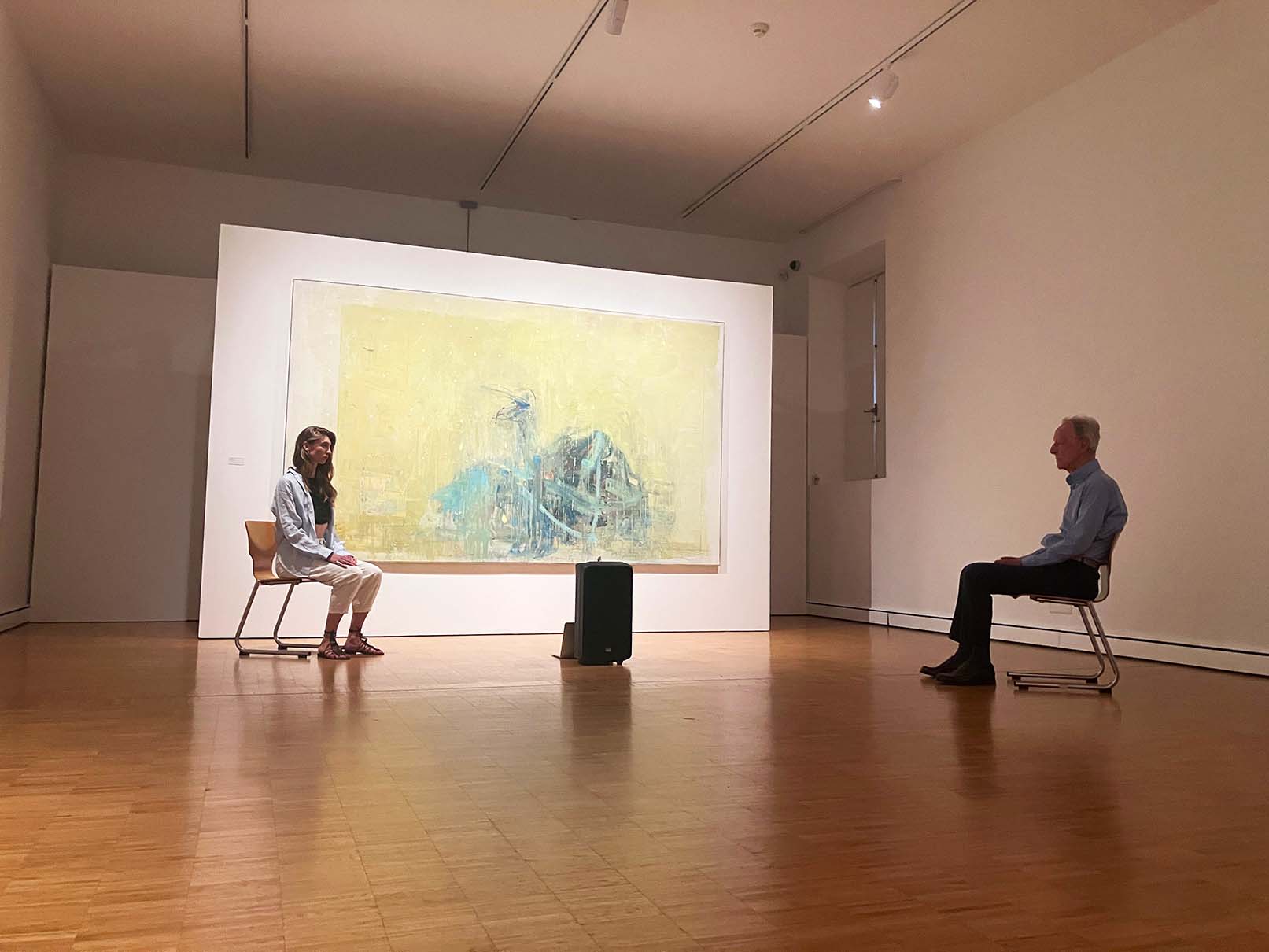
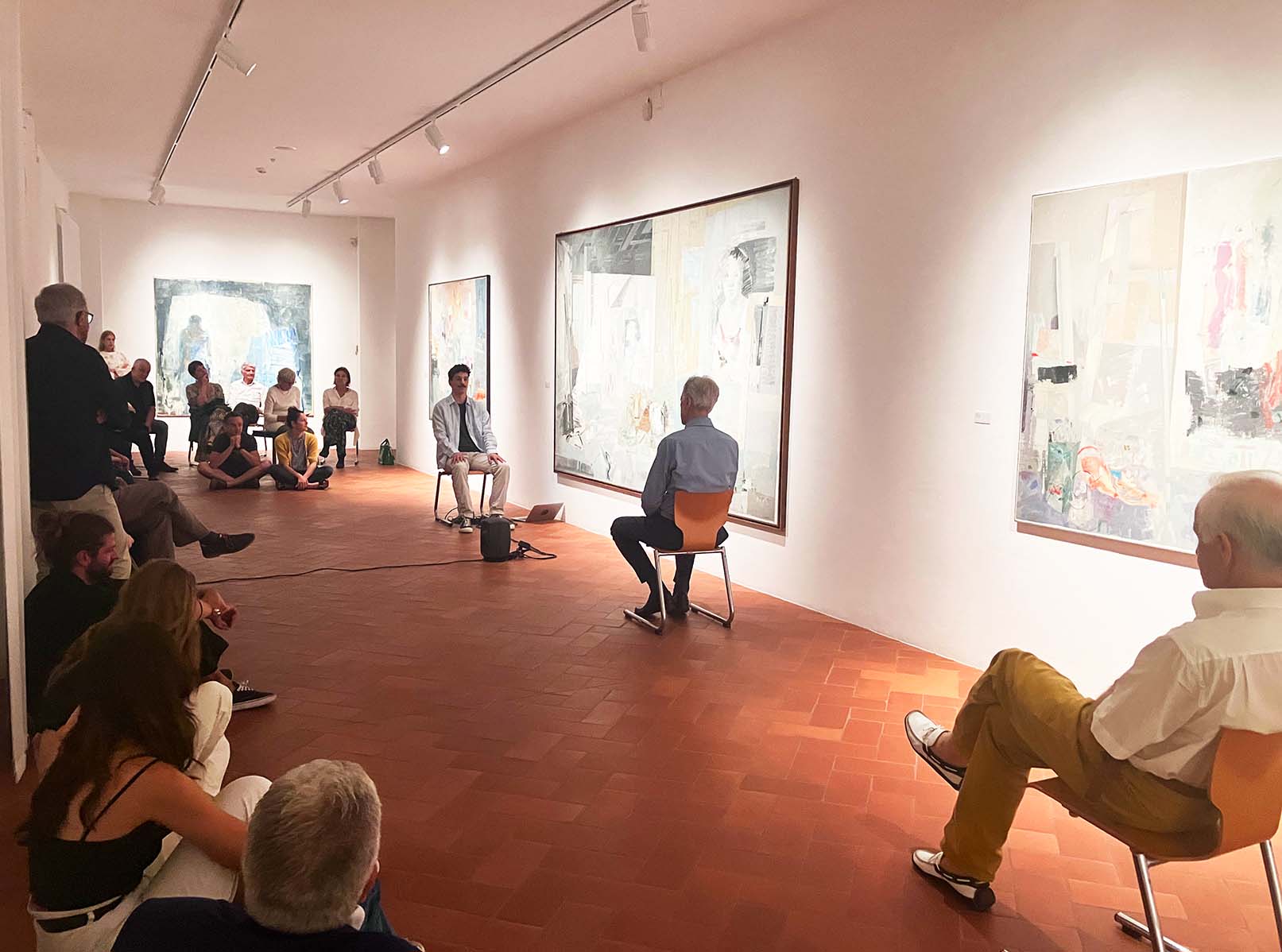

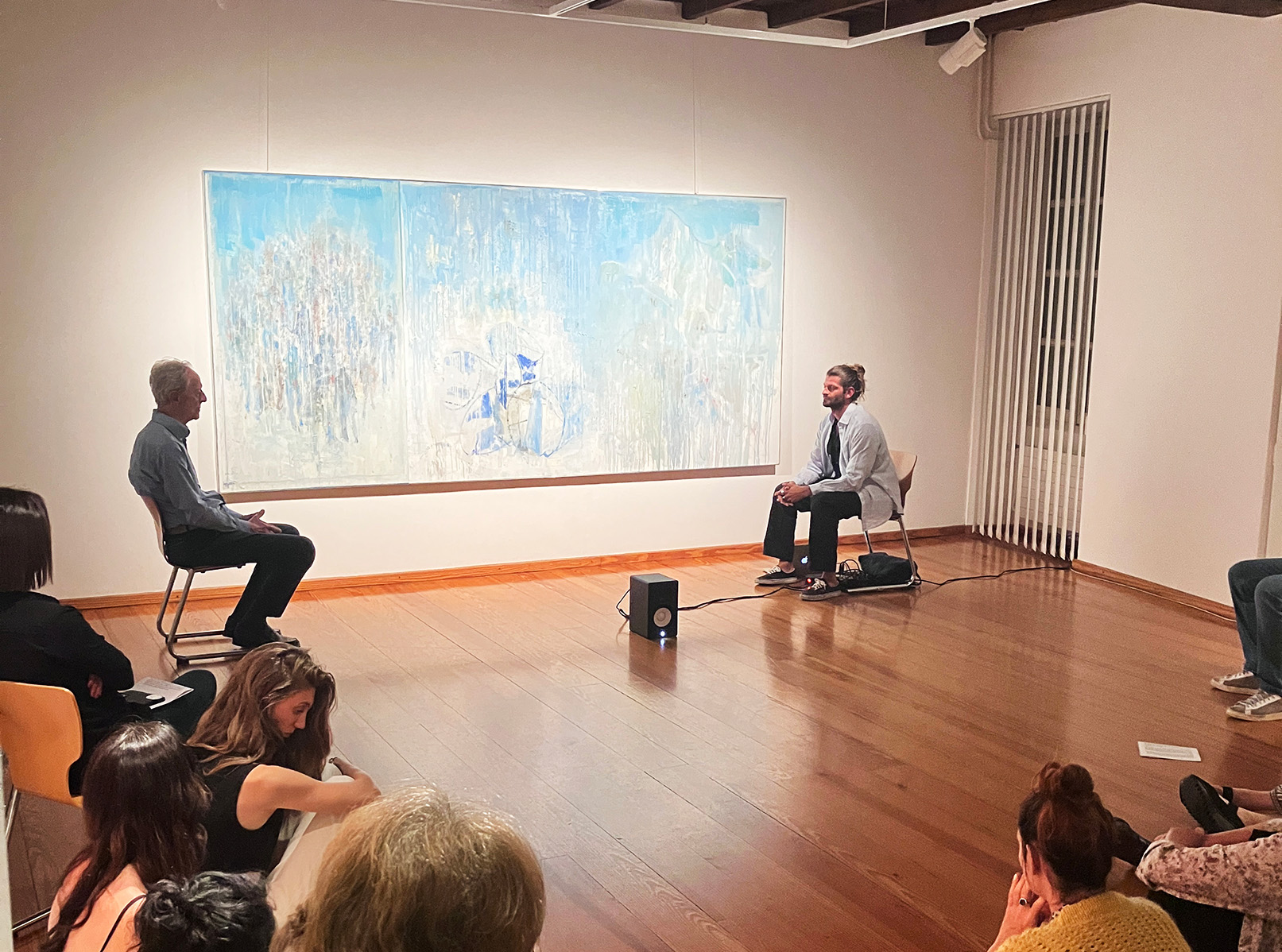
« Siamo sagome sfocate in una luce incerta, viviamonel dubbio, ci interroghiamo sul senso della vita, vulnerabili, consapevoli di non essere nessuno. Cerchiamo di dimenticare, non pensare. Ma la terra trema, noi tremiamo. »
Joséphine Bohr.
“Capiscimi: non è il fondale nero che ognuno di noi porta dentro di sé, a spaventarci, né lo è la forbice che minaccia il filo sottile che ci attacca alla vita. Ma piuttosto l’indifferenza, che asciuta in egual misura le lacrime di chi piange a stomaco pieno e a stomaco vuoto.”
Tito Bosia
Joséphine Bohr.
“Capiscimi: non è il fondale nero che ognuno di noi porta dentro di sé, a spaventarci, né lo è la forbice che minaccia il filo sottile che ci attacca alla vita. Ma piuttosto l’indifferenza, che asciuta in egual misura le lacrime di chi piange a stomaco pieno e a stomaco vuoto.”
Tito Bosia
Sound installative performance
One-off
Concept
Alan Alpenfelt
Texts
Joséphine Bohr
Matteo Luoni
Tito Bosia
Anne Haug
Paintings
Cesare Lucchini
Cesare Lucchini lived on an axis between Cologne, Ticino and Milan and in this light we are interested in retracing him through the narrative views of artists of the word who live and create in and between these territories: Germany, internal Switzerland, Italian Switzerland and Italy. These perspectives will contain the personal experience of each author on Lucchini's artistic medium, on the territory, but also on their biographical data, in contact and "collision" with the biographical and exuberant data of the pictorial artist.
If the exhibition is titled "the earth trembles", we played with the word "tremble" transforming it into "plot": what will be the plot of the meeting between these writers and the artist?
The creative process started from contact with Lucchini:
Four authors (Anne Haug, Tito Bosia, Joséphine Bohr, Matteo Luoni) visited the artist's studio, in the industrial area of Lugano, each at separate times.
The meeting was recorded and became the creative basis of a specific writing, which captured the painter's work and life under different facets.
The geographical origin of each playwright involved and their "nomadic" professional history, between different cities and towns, became the generating meeting point of four textual and sound dramaturgies: in the centre, as in the large canvases exhibition in Mendrisio, four different human landscapes, lost between transcendence and immanence, this time no longer made of pigment and matter, but of words, sounds and voices.
[...] “Ragazzi, il Signore è del Milan. Und en Teil der Gäaste stegh auf, ich schöre, kommt zu mir, umarmt mich, piacere, piacere, wenn ich will, dann darf ich am Sonntag mit ihnen Fussball gucken. Ein Platz am Milan-Tisch ist reserviert. Und nun war alles klar. Die vier Bildschirme hägnen da, um Inter, Milan, Juventus un Napoli zu schauen. Und ich war nun fester Teil des Milan-Tisches. “[...]
Anne Haug.
[...]
“Paura di restare, fermarmi, e capire d’un tratto, che la vita era tutta lì. Che non avevo più occhi per conoscere altri artisti, mani per dipingere altri quadri, forza per tendere un’altra tela.
Paura di te.” [...]
Matteo Luoni
Anne Haug.
[...]
“Paura di restare, fermarmi, e capire d’un tratto, che la vita era tutta lì. Che non avevo più occhi per conoscere altri artisti, mani per dipingere altri quadri, forza per tendere un’altra tela.
Paura di te.” [...]
Matteo Luoni
Mein Vater Erzählt Mir Jeden Sonntag Unsere Neun Planeten
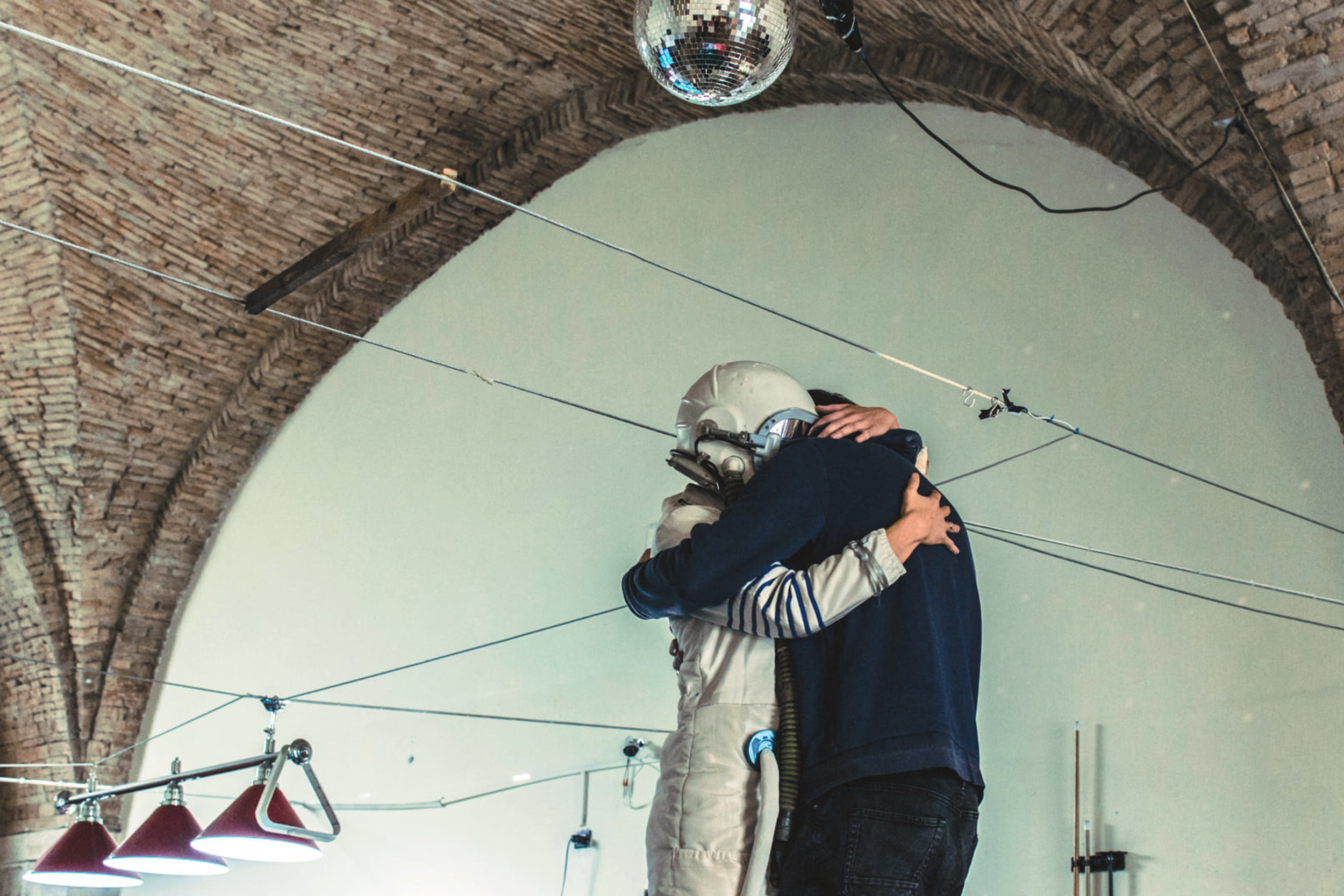



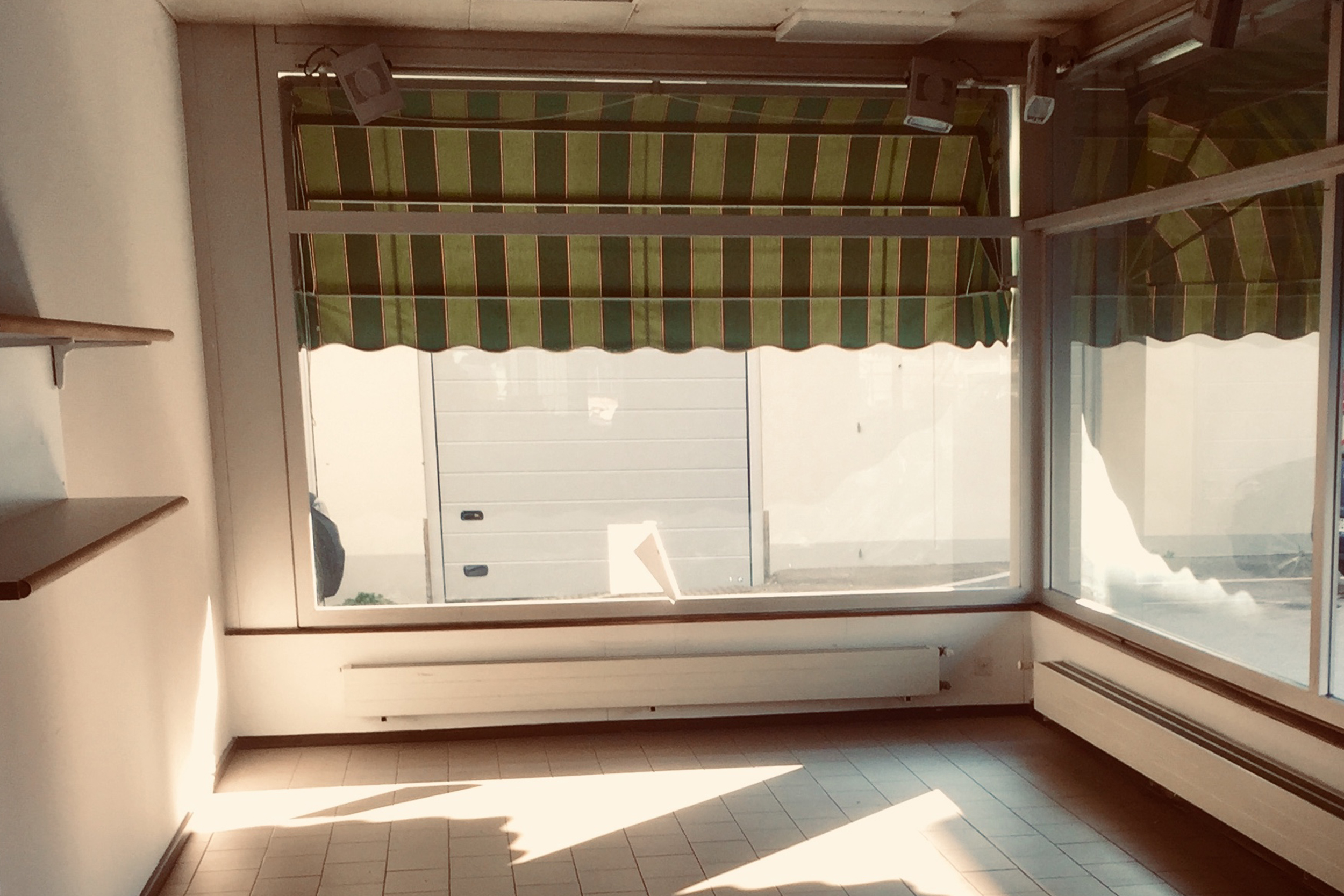






A ship is the greatest reservoir of imagination. Civilizations without boats tend dry up their dreams. Espionage replacesadventure, police replace pirates.
Michel Foucault
Michel Foucault
Mein Vater Erzählt Mir Jeden Sonntag Unsere Neun Planeten is a sound and performance installation curated by Alan Alpenfelt and Francesca Sproccati. It invites the public to discover heterotopic spaces where the experience of listening and sharing solitude helps to detach ourselves towards unfamiliar places, to a spiritual space that re-opens the imagination, creativity and the way we reflect upon things.
Two urban shops are transformed into spaceships and inhabited by two astronauts for the duration of 24 hours, both connected by a radio transmission.
The first one is a radio station that wants to question the unknown spaces beyond the boundaries of the Earth through the practice of listening.
The second one is a place where the gaze is focused on the relationship of intimacy between human beings, exploring the distance that separates one body from another through the practice of listening and spending time dancing, taking care of a garden made of memories of encounters with old people.
Francesca and Alan are both convinced that there are fewer and fewer uncontaminated places on Earth to explore alternative views on society and on themselves. So they decided to go into Space; a place in which the absence of gravity allows new experiments.
By entering a spaceship and navigating in solitude, they can drift towards heterotopic spaces made of sound and subjective time, where listening experiences and meditation help them to detach from what is known and defined. A necessary and spiritual space to re-open their imagination, creativity and the way they reflect upon things.
Unlike utopias which console us by giving us virtuous and perfect spaces to imagine, heterotopias suspend any sort of given truth. They are disquieting because they secretly undermine our language, break up and tangle clichés, devastate the "syntax" that keeps words and things together. They dry up the pre-existing discourse, they block the meaning of words, retracing their roots from every possibility of grammatic expression.
In a world overwhelmed by visual consciousness and political compliance, Alan and Francesca want to explore new places capable of cultivating alternative imagination.
Each in their own, they pass a day and a night bathed in spatial sound “travelling” for 24 hours from a point A to a point B. On their way, they encounter objects, planets and ufos that activate sound works collected during a call. Every minute of the transmission of the journey corresponds to 4,101,650 km.
The public can freely access the two spaceships at any time of the performance and remain with them as much as they want. They are invited to listen together and participate in the solitary activities that each astronaut undertakes while passing the time during the long journey.
Discover more here
︎ https://francescasproccati.ch/mein-vater
Funded by
ProHelvetia
SRKS/FSRC
Republic and Canton of Ticino - Swisslos